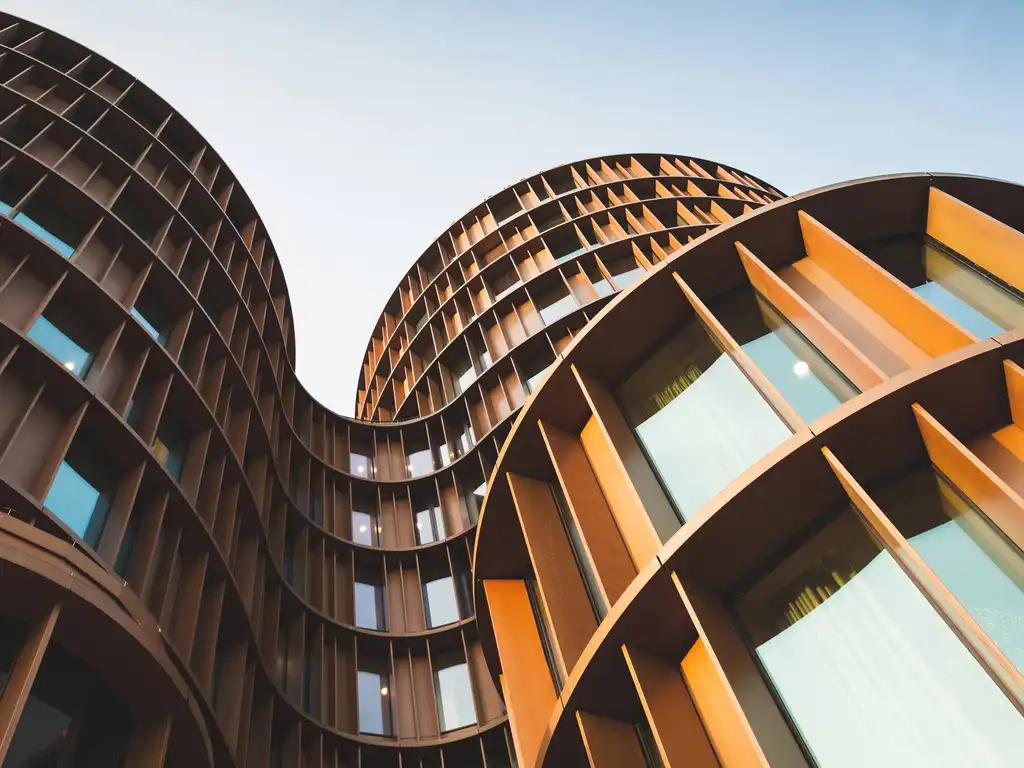Part 1: Building Green and Respecting Native American Identity: Housing, Culture, and Sustainability in Native American Communities
By Mike Blanford, HUD Office of Policy Development and Research; Brian Gillen, HUD Office of Public and Indian Housing; Lynda Lantz, FirstPic, Inc.; Robert Pyatt, University of Colorado Boulder; and Jamie Blosser, Sustainable Native Communities Collaborative.
Except from — Source: https://www.huduser.gov/portal/scinic/building_green.pdf
Devine Legacy on Central was the first mixed-income, transit-oriented development built along the light rail line in Phoenix, Arizona.
Current Best Practices
It is important to acknowledge the innovative and impactful work being accomplished by American Indian communities around the country. In this vein, the Sustainable Native Communities Collaborative, an initiative of Enterprise Community Partners, completed its Case Studies 2013 project, with funding provided in part through SCinIC. The Case Studies documented exemplary tribal housing projects all over the country that took a comprehensive approach to design and construction which could be replicated in other communities. The 17 projects featured represent an emerging trend of sustainable building practices that promise to transform tribal housing projects while preserving their communities’ cultural heritage. Best practices from this work show a focus on good design and site planning, successful collaborations and partnerships, community engagement, and innovative financing and construction techniques.
Community-Specific Housing
Many project teams opened a dialogue with the community to discuss specific family, cultural, and heritage needs in order to ensure that the homes were built to meet the goals of their community and geography. For example, the Place of Hidden Waters project is an updated version
of the traditional Coastal Salish longhouse characteristic of the Pacific Northwest, and the Guadalupe and Nageezi demonstration homes adopt the adobe-style construction and massing typical of traditional desert homes in the Southwest. Thoughtful site planning, as practiced in the
Place of Hidden Waters, Teekalet Village, and Penobscot LEED Homes, can help protect and celebrate the natural habitats central to Native American tribes’ heritage and ways of life. Access to healthy food is an important aspect of site planning, and the Place of Hidden Waters is reaping the rewards of onsite community gardens.
Creative Approaches
Building sustainable and healthy communities requires innovative thinking, and many of the project teams demonstrated creative approaches to developing partnerships, technologies, research, and financing. The Apsaalooke (Crow) Tribe partnered with the University of Colorado at Boulder to develop an earth block house built by a tribal workforce. The Pinoleville Pomo Nation collaborated with many partners to develop a prototype home
and tribally based building codes. Straw-bale homes at Northern Cheyenne in Montana are part of a larger Red Feather Development Group initiative to build super-insulated housing using all-volunteer crews. The Ysleta del Sur Pueblo was the first tribal housing project in Texas to take advantage of low-income housing tax credits, which required considerable partnership building and tenacity.
Comprehensive Approaches
All of the projects take comprehensive approaches to green building, including connections to long-term planning initiatives. In most cases, cultural and economic sustainability were as important as environmental sustainability. Tribal enterprise and employment are crucial to economic sustainability, and many projects incorporated locally-produced or traditional materials such as Navajo FlexCrete (a solid fiber reinforced aerated fly-ash concrete
material), earth, straw bales, and SIPs. The project team for Kumuhau Subdivision modified the AirScape whole house fan, which provides an air circulation system in place of air conditioning, to produce a quieter ventilation system called the Kohilo fan. The Navajo Housing Authority’s
Sustainable Community Planning Manuals were designed to improve the development of more than 34,000 new homes, and more than half the homes in the sacred and cultural core of Ohkay Owingeh have been rehabilitated by tribal members who relearned the traditional method of building with adobe and mud plaster.
Several projects have been catalysts for other community revitalization projects, and many are considered national and regional models. The Place of Hidden Waters and Owe’neh Bupingeh are recipients of the international Social Economic Environmental Design award as well as other national awards for design, planning, and green building. Devine Legacy on Central was the first mixedincome, transit-oriented development built along the light
rail line in Phoenix, Arizona.
